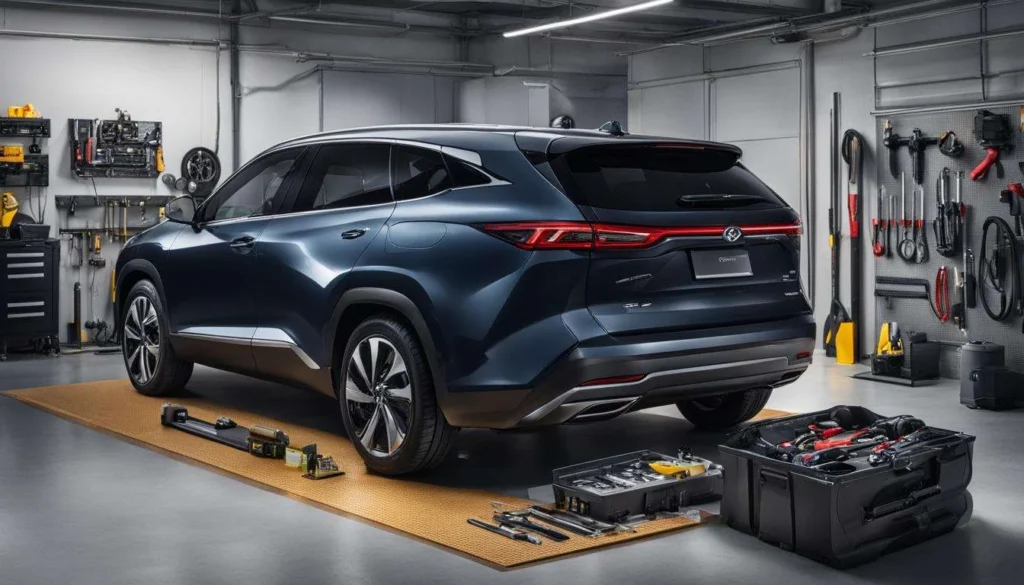A Beginner’s Guide to Understanding Hybrid Cars
Hybrid cars are becoming increasingly popular as people seek more environmentally friendly transportation options. These vehicles are powered by a combination of an internal combustion engine and an electric motor, which work together to improve fuel efficiency. Understanding the intricacies of hybrid cars can be overwhelming for beginners, but with a little guidance, it becomes easier to grasp the technology behind these innovative vehicles. In this guide, we will explore the key components, benefits, and considerations of hybrid cars to help you gain a better understanding of this eco-friendly transportation option.
One of the most intriguing aspects of hybrid cars is their regenerative braking system, which captures and stores energy that would otherwise be lost during braking. This energy is then used to recharge the car’s battery, enhancing its overall efficiency. Additionally, the concept of “idle-off” or “auto-stop” technology, where the engine shuts off when the car is stationary, is another fascinating feature of hybrid cars. This not only reduces fuel consumption and emissions but also minimizes noise pollution in urban areas. Understanding these innovative technologies is essential for anyone looking to make an informed decision about investing in a hybrid vehicle.
1. What is a Hybrid Car?
A hybrid car is a vehicle that combines a traditional internal combustion engine with an electric propulsion system. This allows the car to utilize both gasoline and electricity as power sources, resulting in improved fuel efficiency and lower emissions. The electric motor assists the engine during acceleration and at low speeds, while the engine takes over during high-speed driving and heavy loads.
Hybrid cars come in different types, including parallel hybrids, series hybrids, and plug-in hybrids. Each type operates slightly differently, but they all share the common goal of reducing fuel consumption and environmental impact.
2. How Do Hybrid Cars Work?
Hybrid cars work by seamlessly switching between the gasoline engine and the electric motor based on driving conditions and power demands. When the car is idling or moving at low speeds, the electric motor takes over, drawing power from the battery. As the car accelerates or requires more power, the gasoline engine kicks in to provide the necessary propulsion.
Additionally, hybrid cars use regenerative braking to capture and store energy that would normally be lost as heat during braking. This energy is then used to recharge the car’s battery, further improving its efficiency.
3. Benefits of Hybrid Cars
There are several benefits to driving a hybrid car. Firstly, they are more fuel efficient than traditional gasoline-powered vehicles, which means lower fuel costs for the driver. Additionally, hybrid cars produce fewer emissions, making them more environmentally friendly and contributing to cleaner air quality.
Furthermore, some governments offer incentives for purchasing hybrid cars, such as tax credits or rebates. Hybrid cars also tend to have advanced technology and features, providing a more modern and comfortable driving experience.
4. Common Myths About Hybrid Cars
There are several myths and misconceptions surrounding hybrid cars. One common myth is that hybrid cars are slow and lack power. In reality, many hybrid models offer impressive acceleration and performance, thanks to the combined power of the gasoline engine and electric motor.
Another myth is that hybrid cars are significantly more expensive than traditional cars. While hybrid cars may have a higher upfront cost, the long-term savings on fuel and potential tax incentives can offset this initial investment.
5. Maintenance and Charging of Hybrid Cars
When it comes to maintenance, hybrid cars are similar to traditional vehicles, requiring regular oil changes, brake inspections, and other routine services. However, the electric components of hybrid cars may require specialized maintenance, such as battery checks and software updates.
For plug-in hybrid cars, charging is required to replenish the battery. This can be done at home using a standard electrical outlet or a dedicated charging station. Some hybrid cars also utilize regenerative braking and the gasoline engine to recharge the battery, reducing the need for frequent charging.
6. Popular Hybrid Car Models
There are many popular hybrid car models available on the market today. Some well-known options include the Toyota Prius, Honda Insight, Ford Fusion Hybrid, and Hyundai Ioniq. These models offer a range of features, designs, and price points to suit different preferences and needs.
Additionally, many luxury car manufacturers, such as BMW, Mercedes-Benz, and Lexus, offer hybrid versions of their vehicles, combining fuel efficiency with upscale amenities and performance.
7. The Future of Hybrid Cars
As technology continues to advance, the future of hybrid cars looks promising. Manufacturers are constantly improving hybrid systems to deliver even greater fuel efficiency and performance. Additionally, developments in battery technology and charging infrastructure are making hybrid and electric vehicles more accessible and practical for a wider audience.
With an increasing focus on sustainability and reducing carbon emissions, hybrid cars are likely to play a significant role in the transition towards a greener and more eco-friendly transportation industry.
8. Are Hybrid Cars Right for You?
Deciding whether a hybrid car is right for you depends on your driving habits, budget, and environmental considerations. If you frequently drive in stop-and-go traffic or have a shorter commute, a hybrid car’s fuel efficiency and electric mode capabilities may be beneficial for you.
Additionally, if you are environmentally conscious and want to reduce your carbon footprint, choosing a hybrid car can align with your values. It’s important to research and compare different hybrid models to find the one that best suits your needs and preferences.
| Aspect | Explanation |
|---|---|
| Definition | A hybrid car is a vehicle that uses two or more distinct power sources to move, typically an internal combustion engine and an electric motor. |
| Types | There are different types of hybrid cars, including parallel hybrids, series hybrids, and plug-in hybrids. |
| Benefits | Hybrid cars are known for their fuel efficiency, reduced emissions, and potential cost savings due to regenerative braking and electric-only operation. |
| Challenges | Hybrid cars may have higher upfront costs, limited electric range, and concerns about battery longevity and recycling. |
| Future Outlook | Advancements in technology and infrastructure are expected to further improve the performance and appeal of hybrid cars in the coming years. |



